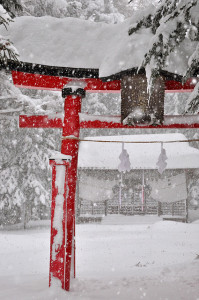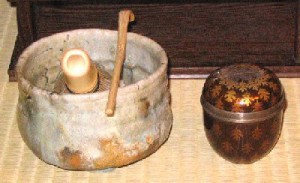Wabi Sabi – Japanese Aesthetics
No matter how much I emphasize, it will not suffice. Japanese Culture is probably the most misrepresented culture defined by stereotypical samples that are harvest of disinformation.
This is mainly due to dissemination of information about Japan from the Western literature from the XVI. Century, instead of authentic Japanese sources. Even the very name of “Japan” is a mispronunciation by the Portuguese merchant seamen and missionaries of the sounds such as “Cipangu”, “Jepeng”, “Zeppen” used for reference to Japan in Mandarin or Wu Chinese. The word “Japan” has been introduced to English literature as “Giapan” for the first time by Luís Fróis, a Portuguese Jesuit missionary in his letter dated 1565. Since then, Nippon’s name has been globally accepted as Japan.
 Japan’s cultural and commercial exchange with the West has continued for a century after Japan’s initial contact with the Portuguese merchants in 1543. The Tokugawa Shogunate adopted an isolationist policy (sakoku 鎖国, locked country) in 1633 and Japan’s seclusion lasted for almost 250 years until the America’s “Black Ships” (kurofune, 黒船) steamed into Tokyo Bay to forcibly open the country to Western trade.
Japan’s cultural and commercial exchange with the West has continued for a century after Japan’s initial contact with the Portuguese merchants in 1543. The Tokugawa Shogunate adopted an isolationist policy (sakoku 鎖国, locked country) in 1633 and Japan’s seclusion lasted for almost 250 years until the America’s “Black Ships” (kurofune, 黒船) steamed into Tokyo Bay to forcibly open the country to Western trade.
This event ensued by the collapse of Bakufu (幕府, military dictatorship) and Meiji Restoration also marked the beginning of long and entangled American-Japanese relationship, which is accountable for narration of Japan based on American perception and perspective.
After a dehumanization as a World War II loser in the fifties, Japan becomes the “samurai, geisha, ninja, sushi and robots” in the eighties, thanks to movies and its appearance as a global economic giant.
In fact, the Japanese Culture is a labyrinth constituted of many subjects each constituting an integral part of each other. When one walks down to depths of it, one becomes more aware of its magnificence, which would entice the person into more research only to eventually getting lost in it.
The pedestal of this culture that I perceive as a labyrinth is wabi-sabi and it manifests itself the first and foremost in Japanese arts.
Wabi-sabi is one of the many terms in Japanese Culture, which is very difficult, if not impossible, to literally translate into English.
 The kanji of wabi-sabi (侘寂) is constituted of侘(びる-wabiru), roughly meaning grieving or feeling sorrow, and 寂(しい-sabishii) meaning being lonely and longing for. Although some sources claim that “wa” comes from the peace and harmony and “sa” represents an unconventional beauty, this may be accepted only contextually, since the term wabi-sabi’s kanjis and their meanings are obvious.
The kanji of wabi-sabi (侘寂) is constituted of侘(びる-wabiru), roughly meaning grieving or feeling sorrow, and 寂(しい-sabishii) meaning being lonely and longing for. Although some sources claim that “wa” comes from the peace and harmony and “sa” represents an unconventional beauty, this may be accepted only contextually, since the term wabi-sabi’s kanjis and their meanings are obvious.
Even this preliminary linguistic explanation may ring a bell for those who are intimate with Japanese Culture and language, but wabi-sabi, as a cultural foundation, is way beyond this linguistic description.
 Wabi-sabi refutes the epithets of Japanese Culture as perfectionist, zealously normative and serious. To the contrary, wabi sabi purports the Buddhist teaching of three marks of existence which are “imperfection, suffering and grief 苦”, “impermanent / mortal – 無常”, and “incomplete, void 空”. This, of course, does not mean to deliberately performing the art or creating an objet d’art as incomplete, lacking, puny or unelaborate. The imperfection we are talking here may sometimes come to mean being perishable, temporary, modest and/or vigorous. It is a melancholic state. This is comparable to the example of Sakura, which displays an extraordinary beauty and withers away at the zenith of its existence.
Wabi-sabi refutes the epithets of Japanese Culture as perfectionist, zealously normative and serious. To the contrary, wabi sabi purports the Buddhist teaching of three marks of existence which are “imperfection, suffering and grief 苦”, “impermanent / mortal – 無常”, and “incomplete, void 空”. This, of course, does not mean to deliberately performing the art or creating an objet d’art as incomplete, lacking, puny or unelaborate. The imperfection we are talking here may sometimes come to mean being perishable, temporary, modest and/or vigorous. It is a melancholic state. This is comparable to the example of Sakura, which displays an extraordinary beauty and withers away at the zenith of its existence.
Wabi-sabi exhibits its nature in a Zen garden, in a single brush stroke painting an incomplete circle, on an unpolished, unsmooth, maybe even slightly fractured tea cup (chavan, 茶碗), in a haiku or in a tea ceremony (茶の湯, chanoyu). Wabi-sabi can be comprehended from observation of such daily examples of its embodiment that can be found in the nature, arts and living.
 In many instances, what we gaze at charms us so much that we think it is “perfect”. The elaborately prepared setting and tools of a tea ceremony, smooth and precise moves of the host, the tea that is presented in an incredible tenderness and the surrounding… However, in this very tea ceremony the host emphasizes his/her insignificance and humility by the maximum diligence and respect paid to the guest. The aesthetics of wabi-sabi that is different from that of the West is concealed in that tea cup (chavan, 茶碗), beautiful but very plain and inexpensive bamboo tools and in the plain empty room equipped by nothing but the stove and maybe a tokonama.
In many instances, what we gaze at charms us so much that we think it is “perfect”. The elaborately prepared setting and tools of a tea ceremony, smooth and precise moves of the host, the tea that is presented in an incredible tenderness and the surrounding… However, in this very tea ceremony the host emphasizes his/her insignificance and humility by the maximum diligence and respect paid to the guest. The aesthetics of wabi-sabi that is different from that of the West is concealed in that tea cup (chavan, 茶碗), beautiful but very plain and inexpensive bamboo tools and in the plain empty room equipped by nothing but the stove and maybe a tokonama.
This is why people admire such beauty, aesthetics and different art forms that stem from the Japanese Culture. Very few of them can really tell why they are so fascinated or come to realize what is missing in it, although they feel the “incompleteness”.
What is to be admired and what is missing is nothing physical, but it is wabi-sabi. It is the scar, it is the loneliness, it is the modesty, it is the gloom.
 It is the effort extended, yearning and desire, despite the impossibility to attain perfection.
It is the effort extended, yearning and desire, despite the impossibility to attain perfection.